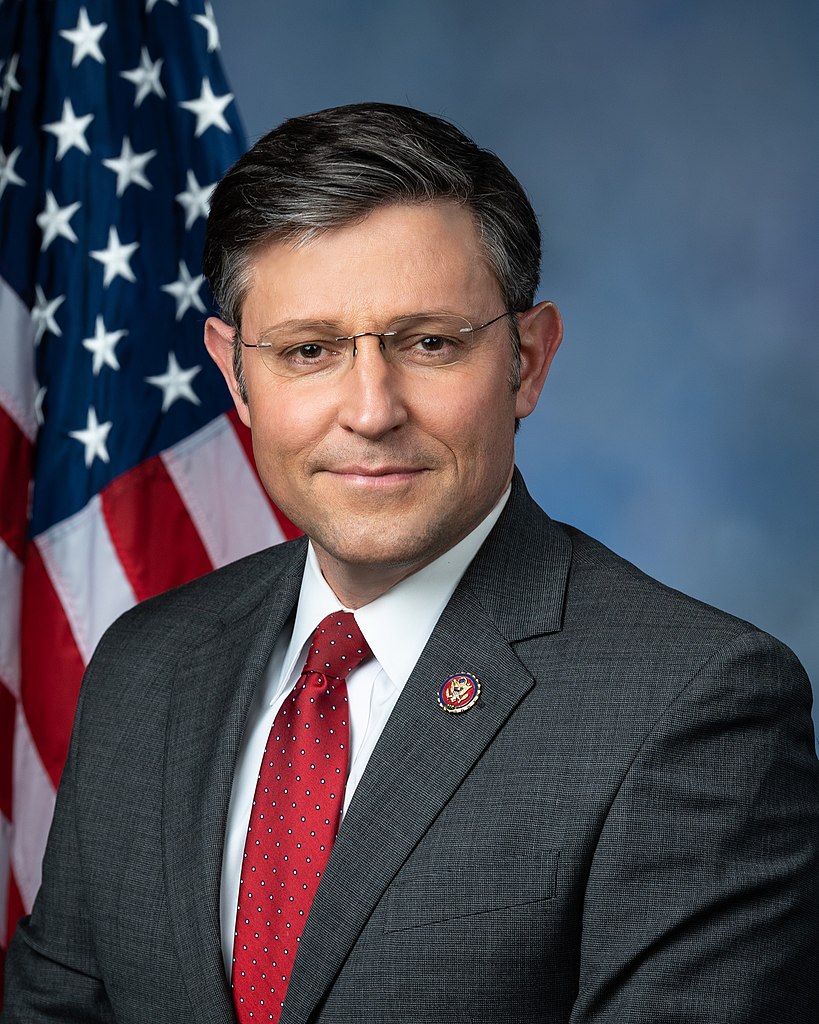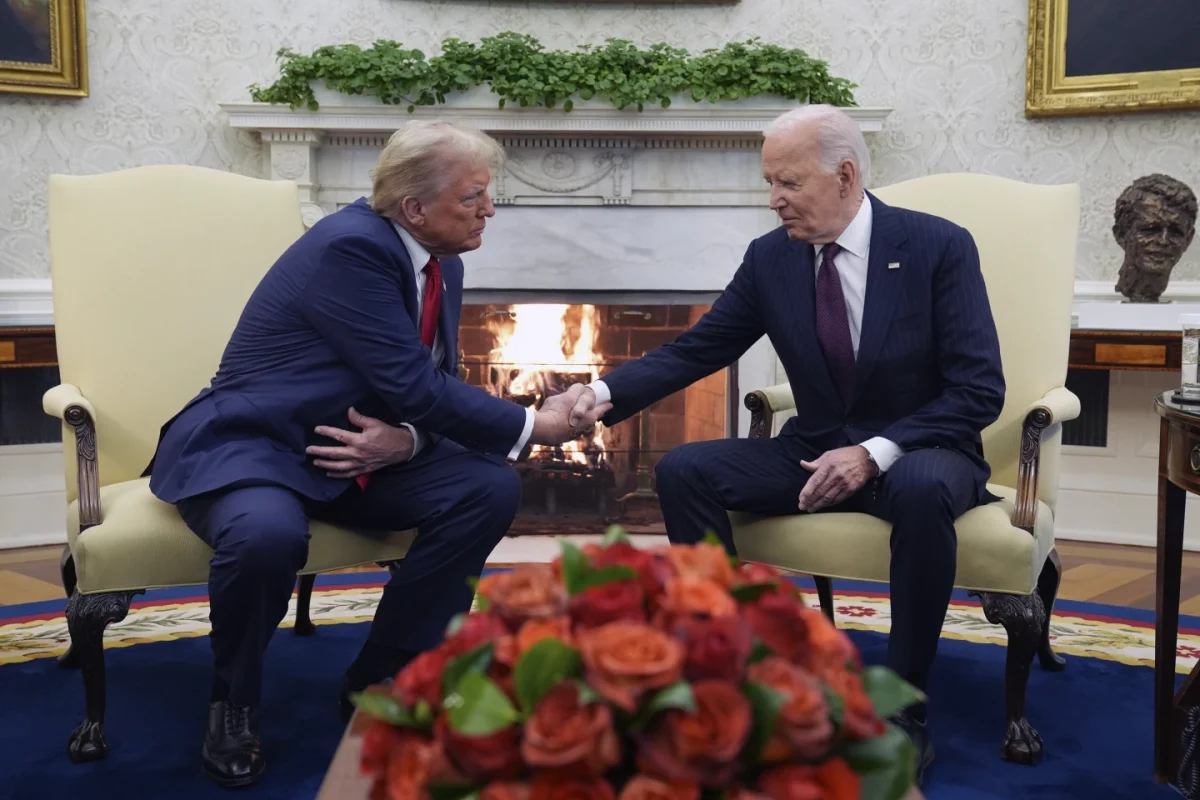This past weekend, thousands participated in the “March for Our Lives” to advocate for gun control. One policy being proposed is a ban on “assault weapons.” There are a number of reasons why such a ban doesn’t make sense and why any ban on a broad category of firearms would have a negative effect.
First of all, if advocates of an “assault weapons” ban were aware of gun crime statistics, they would be focusing on banning pistols instead of rifles. Pistols are used in 65 percent of all homicides, while rifles of all kinds are used in only 3 percent. Pistols are also used more in mass shootings than rifles are. Pistols were used in 59 percent of mass shootings and rifles were used in 24 percent of mass shootings between 1982 and 2012.
Since pistols are “deadlier,” why aren’t gun control advocates focusing on banning pistols instead of rifles? Probably because the shootings that have gotten the most media attention lately have involved rifles, not pistols. Proposing a ban based on media coverage and not based on firearm statistics is illogical.
Secondly, as a previous OGB author pointed out, real assault rifles are already illegal for average civilians.
The AR-15 (the gun used in the Parkland, Las Vegas, and Sutherland Springs shootings) is not an assault rifle. The definition of an assault rifle is a rifle that can be fully automatic. That means more than one bullet comes out for every pull of the trigger (like a machine gun). The AR-15 is semi-automatic, which means only one bullet comes out with a pull of the trigger.
This is why civilians can buy an AR-15 but generally cannot buy a fully automatic M-4 (the rifle the U.S. military uses). Even though the AR-15 looks similar to the M-4, it functions differently. Many semi-automatic rifles do the exact same thing as an AR-15 even though they look different. The proposal to just ban AR-15s is pointless since other semi-automatic rifles would still be legal.
This is the mistake lawmakers made when they passed the 1994 assault weapons ban, which only banned certain semi-automatic rifles. This law did nothing to stop the Columbine shooters from using a Hi-Point 995, a semi-automatic rifle not included in the assault weapons ban of 1994. When the ban expired in 2004, studies by the Institute of Justice and University of Pennsylvania found that it had no measurable effect on violent crime.
So for a gun ban to even have the starting potential to have any impact, it would have to include all semi-automatic rifles and/or pistols. That would mean authorities forcibly confiscating roughly half of all firearms in the U.S. Aside from the obvious legal and Constitutional hurdles to doing this, this undertaking would be completely impractical. Since there is no gun registry of everyone who owns a firearm, authorities would have to rely on people voluntarily turning in their guns.
Those who respect the law enough to do this are not the ones who would be committing gun crimes. People who commit gun crimes already disregard the law so there is no reason they would voluntarily turn in their guns. For the most part, the only people who would be disarmed by this ban are those who would be using their guns for self defense and not crime.
This is why guns bans can lead to more deaths. Guns save more lives through self defense every year than there are murders or accidental deaths from guns.
According to the Center for Disease Control, the number of defensive gun uses per year is anywhere from 500,000 to more than a 1,000,000 per year. Surveys show that 17 percent of people who have used a firearm in self defense believe someone would have died had they not had a firearm for self defense. If you apply that percentage to even the low-end defensive gun use estimate of 500,000 per year, you get the estimate that at least 83,333 lives are saved per year through defensive use of firearms.
That number is much higher than the 15,549 gun murders and accidental gun deaths in 2017. Since gun bans disarm the people who use guns for self defense, the number of lives saved by guns goes down. The number of gun murders, however, stays about the same since criminals don’t comply with the ban. So the net effect of a broad gun ban is more deaths.
Countries, such as the U.K., Ireland and Jamaica that tried some type of broad ban, experienced higher murder rates after the ban. Australia experienced no effect on their murder rate as a result of banning most semi-automatic firearms. There is not a single example of a country that has banned semi-automatic or single action firearms and had a reduction in murders as a result of the ban. The facts show that gun bans don’t work.
It’s understandable that people want to do something after a tragedy to prevent it from happening again. But facts are very important. It’s troubling when people at “March for our Lives” who want to ban assault rifles don’t know what an assault rifle is or that assault rifles are already illegal.
While gun bans won’t make anything better, there are reasonable things that can be done to decrease deaths. Laws we already have can be strengthened and the type of places where people can concealed carry can be widened.
Ownership of guns is important not just because it’s our Second Amendment right, but also because the only thing that stops a bad guy with a gun is a good guy with a gun.















Brandon • Apr 23, 2019 at 7:55 pm
can you give me the original source material for Center for Disease Control and those statistics. I cannot find it on the website anywhere.
TD • Apr 6, 2018 at 12:59 pm
The NRA and others would like you to believe that there is no way to stop
mass murders with firearms. That is FALSE.
In1996, after the Port Arthur massacre in Tasmania, the National Firearms
Agreement (NFA) was enacted across Australia. In the 18 years up to and
including the Port Arthur massacre in 1996, there were 13-gun homicides in
which five or more people died, not including the perpetrator. In the 22 years
since, there have been NO such incidents. IT WORKED.
Published recently in the Annals of Internal Medicine, scholars at the
University of Sydney and Macquarie University used mathematical techniques to test the null hypothesis that the rate of mass shootings in Australia before
and after the 1996 law reforms is unchanged. An analysis of firearm deaths
between 1979 and 2013 showed that 13 mass shootings (homicides in which at
least 5 persons died, not including the perpetrator) took place in the 18 years
preceding and including the Port Arthur massacre; none has occurred in the 22
years since. The odds of a 22-year absence of mass shootings in Australia since1996 gun reforms being due to chance (that is not due to the new law) are on ein 200,000.
https://www.sciencedaily.co….
http://annals.org/aim/fulla…
The NRA and others would like you to believe that there is no way to reduce
firearm deaths.That is FALSE.
Using the states in the US as a test we can see that you are six times more
likely to be killed by a firearm in Louisiana than in Massachusetts.
Massachusetts has stricter gun laws and they are strictly enforced. Louisiana
has weaker laws. (For example Massachusetts has background checks on private gun sales and magazine size restriction, Louisiana does not). In fact, mostly blue states have lowest rates of death by firearms, mostly red states have the highest rates. STRICTER LAWS AND LAW ENFORCEMENT WORK. Please note that Massachusetts has a lower gun ownership rate than Louisiana.
Lowest rates
Hawaii 2.71
Massachusetts 3.18
New York 4.39
Connecticut 4.48
Rhode Island 5.33
New Jersey 5.6
New Hampshire 7.03
Minnesota 7.88
California 7.89
Iowa 8.19
Illinois 8.67
Highest rates
West Virginia 15.10
South Carolina 15.60
New Mexico 15.63
Tennessee 15.86
Oklahoma 16.41
Arkansas 16.93
Montana 16.94
Wyoming 17.51
Mississippi 17.55
Alabama 17.79
Louisiana 19.15
Alaska 19.59
https://en.wikipedia.org/wi…
Henry Koontz • Apr 6, 2018 at 4:33 pm
In your discussion of states’ firearm death rates, you make a common mistake that many make when talking about gun control. That error is that you are looking at cross-sectional data and not time-series data. Since there are factors other than guns that effect violence in states, it doesn’t tell you anything about effectiveness of gun control laws to compare states’ gun death rates in the way that you do. What you have to look at is whether the rates changed after the laws were enacted. That’s called time-series data. Time-series data does not show that gun bans work. It’s unfortunate that many gun-control advocates don’t understand how to properly use statistics to measure effectiveness of gun laws.
Like I said in an earlier comment, looking at the mass shooting rate is pointless. If 6 people die in different incidents, that’s equally bad as 6 people dying in a mass shooting. Potentially you could have a reduction in mass shootings as a result of a gun law, but not a reduction in the overall gun murder rate. In that case, the gun law is not actually saving any lives even though the mass shooting rate went down. So you have to look at changes in the overall murder rate to see if a gun law is effective.
TD • Apr 7, 2018 at 9:02 am
Tell the people in Las Vegas and the studenst at Parkland that they cannot be protected the way Australian are protected, which, by the way was time-series data. Tell them that looking at the rate of mass shootings is pointless. The people in Australia thought otherwise and gave a “natural” experiment which shows that gun control laws work.
Looking at cross sectional data is not a mistake, and it is overwhelming.
Americans own 48% of the civilian owned guns worldwide.
Americans own more guns per capita than any other country. (Yemen second)
The US has 5% of the worlds population but has 31% of global
mass shooters (the Philippines in second.)
Gun death rates are 25.2 times higher in the US than other high-income countries. (Finland is second. US Homicide rate 36, suicide rate 66, Finland 3 and 33.) Second in homicide rate is Portugal at 6.
https://www.cnn.com/2017/10/03/americas/us-gun-statistics/index.html
The US has had more than 1,600 mass shootings since Sandy Hook.Almost 1 per day ( 0.83).
States with more guns have more gun deaths
Developed countries with more guns have more gun deaths
The correlation between gun ownership and death by gun approaches 0.95
America is an outlier in gun deaths, but not overall crime.
States with tighter gun control laws have fewer gun-related deaths
The states with the most guns report the most suicides
Suicide attempts by guns are fatal 95% of the time.Cutting 5,1%, Poison 7.4%
In states with more guns, more police officers are
also killed on duty
https://www.vox.com/policy-and-politics/2017/10/2/16399418/us-gun-violence-statistics-maps-charts
Henry Koontz • Apr 7, 2018 at 2:27 pm
So here’s an example that might help you understand why cross sectional data is not useful in the gun control debate. Say there are A states that have very high crime and B states that have very low crime. Say the A states pass a law to decrease the crime. Let’s say that this law decreases crime a bit but not down to B state levels. Using cross sectional data, one would falsely conclude that since A states who passed the law have higher crime rates than B states, the law must cause higher crime rates. In reality, that’s not true since the law actually decreased crime. So using cross sectional data leads to false conclusions. Does this example help you understand why cross sectional data is not useful?
TD • Apr 7, 2018 at 4:44 pm
We are not talking about single rates, not in Australia, or in US states, or countries. These patterns persist over decades. Massachusetts has had much lower death rates than Louisiana for decades.
Henry Koontz • Apr 7, 2018 at 5:21 pm
Like I pointed out earlier, there is no evidence that Australia’s gun ban reduced homicide rates. Studies show that there was no statistical effect on the gun homicide rate.
For states, do you know of any studies that measured the change in homicide rates before and after states enacted stricter gun laws?
TD • Apr 7, 2018 at 9:49 pm
You clearly did not read or understand the first two references in my first post. The change in the law statically reduced the mass shootings.
A analysis of Australian Bureau of Statistics figures showed that in 1996, Australia had had 311 murders, of which 98 involved guns. In 2014. When the population had increased from about 18 million to 23 million, 238 people were murdered, 35 by guns.
In other words, the likelihood of being murdered by gunshot fell by 72 per cent in that period, from 0.54 to 0.15 per 100,000 people, The homicide rate also, as pointed out above was reduced by 1/3.
https://www.independent.co.uk/news/world/australasia/las-vegas-shooting-australia-gun-laws-control-stephen-paddock-2nd-amendment-nevada-firearm-a7980671.html
The fact that the NE US has for many decades had much lower rates than the SE, with their different laws; as well as the US, for decades has had much higher rates than comparable countries over generations, shows that that stricter laws and enforcement have an affect. . However the trend in US rates has reversed, increasing in the last few years as the gun laws have been relaxed in many states. The fact that there were no “natural experiments” in the US does not prove that gun laws have no affect on the homicide rate in the US.
Henry Koontz • Apr 7, 2018 at 10:20 pm
And you must not have properly read my comment. I said there’s no statistical evidence that the gun ban reduced the “gun homicide” rate not the “mass shooting” rate. These are not the same thing. I was pointing out that in your previous comment you falsely claimed that “their new laws have reduced homicide rates”. Can we agree that there was no statistical effect on the gun homicide rate as a result of Australia’s gun ban? If not, what are the specific errors the studies I referenced made in their methodology?
We have had a “natural experiment” with gun bans in the US. The 1994 assault weapons ban had no statistical effect on the murder rate. Studies by the Institute of Justice, Task Force on Community Preventive Services, and University of Pennsylvania confirmed this.
TD • Apr 8, 2018 at 8:10 am
We had a ban on the sale of semi-automatic rifles, not a program like Australia.
Henry Koontz • Apr 8, 2018 at 12:47 pm
Before I address that, are you going to answer my question?
TD • Apr 8, 2018 at 8:21 am
I ask you a question. Should the USA reduce its very high
death by guns rate in half? We would go from 12 per 1000,000 to 6 or below?
Reward: Over the next generation we would save over 400,000 lives, about as many as US deaths in World War 2.
Can it be done? Yes,we already have 6 states with rates lower than 6, Massachusetts and Hawaii are below 3.
Has anything similar been done? Yes, Australia set out to lower the number of mass suicides. It succeeded beyond its dreams. In the twenty years before the effort(1996) there were 13 mass shootings. In the 20 years after none. As a bonus they
lowered their death rate by gun by over 1/3.
This will be my last post (chronologically) about this article.
Henry Koontz • Apr 8, 2018 at 1:13 pm
So are you going to ignore the studies that proved Australia’s gun ban had nothing to do with its lowered homicide rate? Are you going to ignore the fact that reducing mass shootings means nothing if the overall homicide rate isn’t reduced?
I see you’d rather give up than try to address these things.
TD • Apr 10, 2018 at 9:07 am
“Lies, damned lies, and statistics” is a phrase
describing the persuasive power of numbers, particularly the use of statistics to bolster weak arguments. (British Prime Minister Benjamin Disraeli:)
Nonetheless as already stated:
An analysis of Australian Bureau of Statistics figures
showed that in 1996, Australia had had 311 murders, of which 98 involved guns.In 2014. When the population had increased from about 18 million to 22 million (2014),
238 people were murdered, 35 by guns.
In other words, the likelihood of being murdered by gunshot fell by 72 per cent in that period, from 0.54 to 0.15 per 100,000 people, The total homicide rate also,
as pointed out, was reduced from 1.9 to 1.1, a 40% reduction. https://theconversation.com/three-charts-on-australias-declining-homicide-rates-79654
The simple fact (without sophisticated statistical analysis) is that after years of an increasing rate of homicides the rate peaked as the law was passed (which was targeted at mass shootings which stopped entirely for 20 years) and the rate of homicides has now been reduced by 40%. Let the reader judge for herself.
Henry Koontz • Apr 10, 2018 at 11:15 am
So your analysis doesn’t take into account factors other than access to guns that effect the homicide rate. Why do you think we should ignore these factors when asessing whether the gun ban had an effect on homicide rate?
TD • Apr 23, 2018 at 8:13 am
Police believe the suspect in a shooting that killed four people at a Waffle House early Sunday could be armed
with two guns, despite the fact that authorities seized his firearms following a 2017 arrest.
Four of Reinking’s guns, including the AR-15 rifle police said he used Sunday, were seized after he was arrested by the U.S. Secret Service in July 2017 on charges that he scaled a fence near the White House.
Following the arrest, Reinking was interviewed by local and federal authorities and his Illinois firearms authorization was revoked.
Reinking’s four guns were given to his father, who has said he gave them back to his son, according to the authorities.
How many lives are access to semi-automatic weapons worth?
Henry Koontz • Apr 23, 2018 at 3:02 pm
So there was a gun control law in place that was meant to stop him from getting access to guns and yet he still got access to guns anyway. Just proves that people will always find ways around gun control laws.
TD • Apr 24, 2018 at 8:37 am
Not a law that bans semiautomatic weapons like Australia
Henry Koontz • Apr 24, 2018 at 2:30 pm
Which did not prevent any loss of life.
But if you want, we can continue that debate where we left off when you stopped replying. What errors are there in the methodology of the studies I referenced that cause you to ignore their findings?